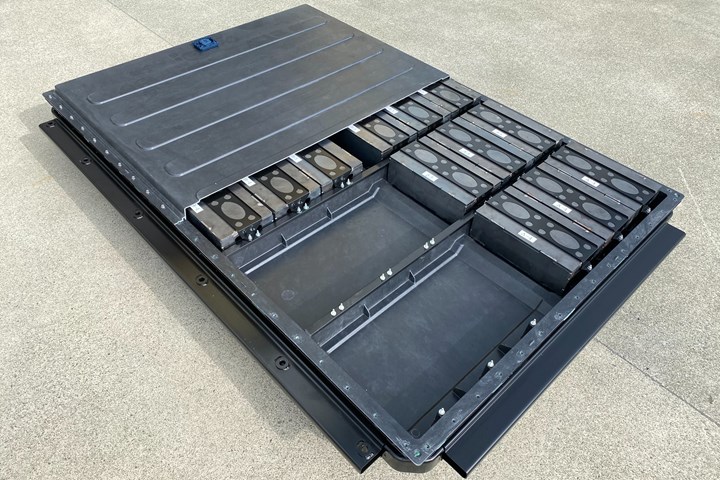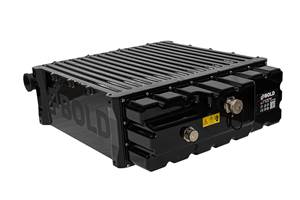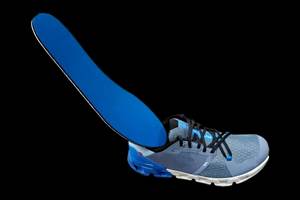CSP Advanced Materials Center unveils composite battery enclosure and material innovations
Transition into broader R&D capabilities include honeycomb manufacturing process for ultra-lightweight Class A panels and a full-sized, multi-material battery enclosure featuring a one-piece composite cover.
Share
Read Next

A multi-material battery enclosure featuring CSP proprietary materials. Photo Credit: Business Wire
Continental Structural Plastics (CSP, Auburn Hills, Mich., U.S.), along with its parent company Teijin Ltd., unveiled on Dec. 9 an innovative honeycomb Class A panel technology and an advanced, multi-material electric vehicle (EV) battery enclosure that can be molded in any number of CSP’s proprietary composite formulations. These component technologies were developed at the company’s new Advanced Technologies Center in Auburn Hills, Michigan, CSP’s second R&D facility in the city, and indicate the company’s transition into broader R&D capabilities following Teijin’s acquisition.
The new Advanced Technologies Center is a 47,500 square-foot facility of which 24,000 is dedicated to R&D efforts to develop next-generation materials and processes to move CSP and Teijin beyond sheet molding compound (SMC) and into new markets and technologies. Equipment includes a 4000-ton press with leveling and vacuum, a 750-ton press with vacuum, a400-ton press with a 10-foot bed, six thermolators, two FANUC Robotics and a coordinate measuring machine (CMM).
“We are developing technologies and processes here that leverage CSP and Teijin’s expertise in thermoplastic and thermoset composites, carbon fiber and manufacturing to provide our customers with new options for existing and future vehicle programs,” says Hugh Foran, executive director, New Business Development, New Markets and Technologies. “We can reduce weight while improving durability and occupant safety — all key features needed for autonomous, connected and electric vehicles.”
In addition to transitioning technologically, the Advanced Technologies Center took on a few projects to fulfill these new R&D efforts. The first of these projects is CSP’s new honeycomb manufacturing process which produces ultra-lightweight Class A panels. Considered a “sandwich” composite, these panels use a lightweight, honeycomb core, clad with natural fiber, glass fiber or carbon fiber skins that are wetted with polyurethane (PUR) resin. CSP says this process enables the molding of complex shapes and sharp edges, and results in panels that offer very high stiffness at a very low weight.
All told, the CSP multi-material battery enclosure is said to be 15% lighter than a steel battery box.
CSP is also currently in development and production of more than 34 different electric vehicle (EV) battery box covers in both the U.S. and China. However, to expand the company’s offering and provide customers with a superior battery enclosure, CSP and Teijin have developed a full-sized, multi-material battery enclosure featuring one-piece composite cover and one-piece composite tray with aluminum and steel reinforcements.
According to both companies, automakers often face a number of challenges with current multi-piece steel and aluminum EV battery enclosures, including the overall weight of the case (typically more than 1,000 pounds), and the need for multiple welds, fasteners and bolts which can ultimately result in leaks. By molding the cover and the tray each as one piece, CSP says it has created a system which is easier to seal and can be certified prior to shipment. The company has two patents pending for its innovative box assembly and fastening systems.
The company also developed a mounting frame utilizing a structural foam for energy absorption. This enables a reduced frame thickness and weight, while improving crash performance. Additional benefits of the multi-material battery enclosure include:
- Non-conductive
- Can be molded in complex shapes
- Less complexity in tooling
- High strength
- Dimensional stability
- Molded-in sealing features
- Ability to mold-in shielding, including EMI and RFI protection
- Corrosion resistance
- Reduced tooling cost
All told, the CSP multi-material battery enclosure is said to be 15% lighter than a steel battery box. Although it is equal in weight to an aluminum enclosure, the CSP enclosure offers better temperature resistance than aluminum, especially if the phenolic resin system is used. Additionally, the one-piece design for the tray has no through holes, so no sealing or sealant are required. This not only eliminates the chance of leaks, it reduces overall production costs and complexity.
Many of these benefits could not have been achieved without the superior composites chemistry developed by CSP’s materials R&D team, the company claims. This assortment of advanced composites allows customers to select the formulation for the cover and/or base that best meets their specifications. CSP’s battery enclosure materials options include:
- Traditional high-fill polyester/vinyl ester ATH system that uses conventional SMC chemistries, is easily adapted to existing tools and will give excellent baseline performance in the right design.
- Intumescent system using similar chemistry to traditional SMC, but with better flammability and thermal runaway performance.
- Phenolic system which is ideal for high temperature applications where parts must meet fire safety, smoke emission, combustion and toxicity requirements. A phenolic system will have excellent flame retardance, heat and chemical resistance and electrical non-conductivity characteristics.
Each of these chemistries can be adapted utilizing different fiber types or formats (e.g. glass/carbon/blended/other, chopped and/or continuous), and any can be formulated to achieve the most stringent VOC requirements.
“The work being done at the Advanced Technology Center, combined with the materials advancements being achieved at our R&D facility at headquarters, is enabling CSP to maintain our leadership position in advanced composites, and establish us as a global player in the multi-materials field,” says Steve Rooney, CEO of CSP. “Together, with the carbon fiber and materials expertise that Teijin brings, we are developing light weight solutions that enable our customers to think outside the box when it comes to vehicle design.”
The team at the Advanced Technologies Center currently includes five engineers and designers. CSP’s Advanced Technology Department, in combination with R&D and Product Development, is comprised of more than 80 engineers, designers and scientists. Before CSP was acquired by Teijin, this facility was a Teijin R&D center, and is where the Sereebo manufacturing process was developed. This is the process now in use to manufacture the PACE Award winning GMC Sierra Denali pickup box CarbonPro, what is said to be the industry’s first carbon fiber pickup box.
Related Content
Composite wrap system combats corrosion in industrial tank repair
A fiberglass and carbon fiber composite wrap system enabled an Australian nickel mine to quickly repair a stainless steel ammonium sulphate feed tank and protect against future corrosion.
Read MoreAviation-specific battery system uses advanced composites to address electric, hybrid flight
BOLDair’s composite enclosure, compression structures and thermal runaway management enables high-performance electric energy storage.
Read MoreRunning shoe insoles get a lift with thermoplastic fiberglass tapes
FlexSpring insoles take advantage of unidirectional, continuous fiberglass and thermoplastics to enable next-level performance for the everyday runner.
Read MoreZEBRA project demonstrates closed-loop wind recycling system
Consortium partners have proven the complete recycling of thermoplastic wind turbines via two manufactured wind blades, featuring reduced operating cost, CO2 emissions.
Read MoreRead Next
All-recycled, needle-punched nonwoven CFRP slashes carbon footprint of Formula 2 seat
Dallara and Tenowo collaborate to produce a race-ready Formula 2 seat using recycled carbon fiber, reducing CO2 emissions by 97.5% compared to virgin materials.
Read MorePlant tour: Daher Shap’in TechCenter and composites production plant, Saint-Aignan-de-Grandlieu, France
Co-located R&D and production advance OOA thermosets, thermoplastics, welding, recycling and digital technologies for faster processing and certification of lighter, more sustainable composites.
Read MoreVIDEO: High-volume processing for fiberglass components
Cannon Ergos, a company specializing in high-ton presses and equipment for composites fabrication and plastics processing, displayed automotive and industrial components at CAMX 2024.
Read More

























